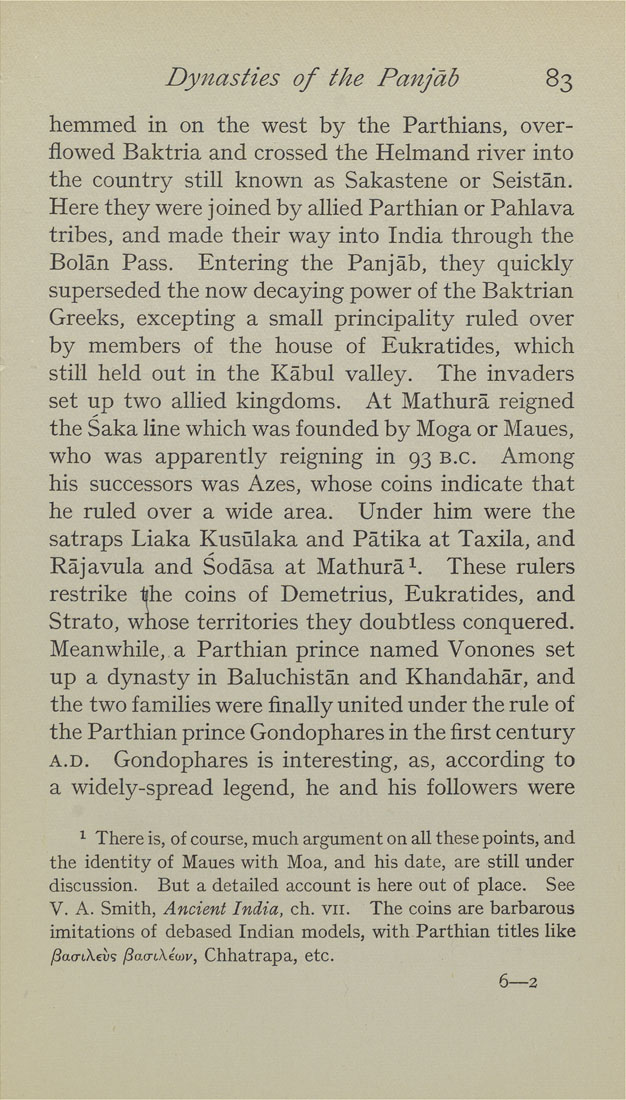Dynasties of the Panjab 83
hemmed in on the west by the Parthians, over¬
flowed Baktria and crossed the Helmand river into
the country still known as Sakastene or Seistan.
Here they were joined by allied Parthian or Pahlava
tribes, and made their way into India through the
Bolan Pass. Entering the Panjab, they quickly
superseded the now decaying power of the Baktrian
Greeks, excepting a small principality ruled over
by members of the house of Eukratides, which
still held out in the Kabul valley. The invaders
set up two allied kingdoms. At Mathura reigned
the Saka line which was founded by Moga or Maues,
who was apparently reigning in 93 B.C. Among
his successors was Azes, whose coins indicate that
he ruled over a wide area. Under him were the
satraps Liaka Kusulaka and Patika at Taxila, and
Rajavula and Sodasa at Mathura^. These rulers
restrike the coins of Demetrius, Eukratides, and
Strato, whose territories they doubtless conquered.
Meanwhile, a Parthian prince named Vonones set
up a dynasty in Baluchistan and Khandahar, and
the two families were finally united under the rule of
the Parthian prince Gondophares in the first century
A.D. Gondophares is interesting, as, according to
a widely-spread legend, he and his followers were
^ There is, of course, much argument on all these points, and
the identity of Maues with Mo a, and his date, are still under
discussion. But a detailed account is here out of place. See
V. A. Smith, Ancient India, ch. vii. The coins are barbarous
imitations of debased Indian models, with Parthian titles like
f3a(nX€v<5 (3aaiXe(t>v, Chhatrapa, etc.
6—2
|








